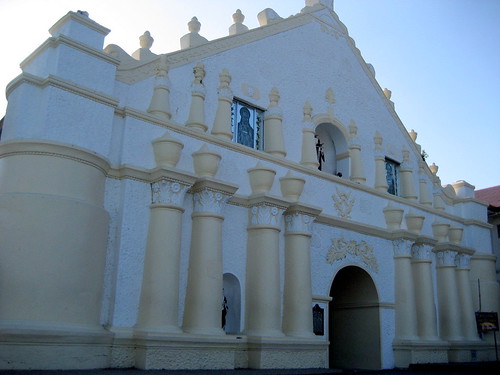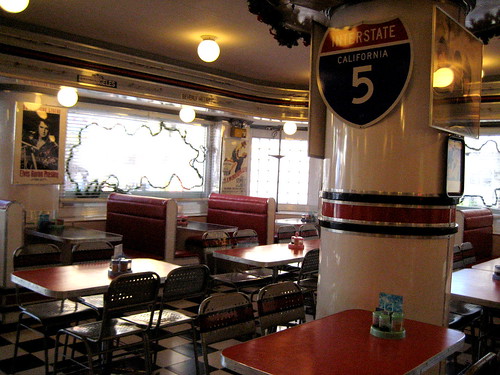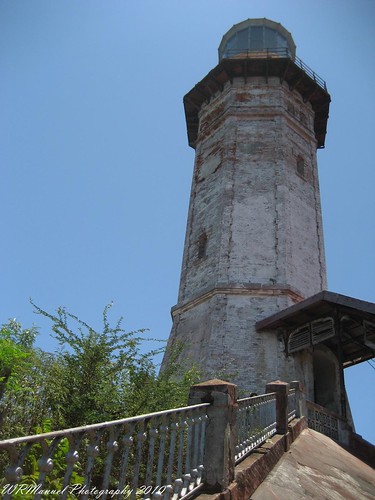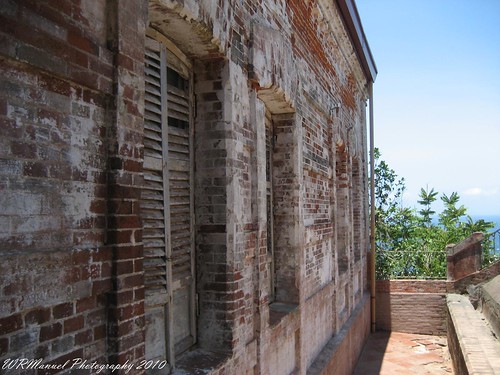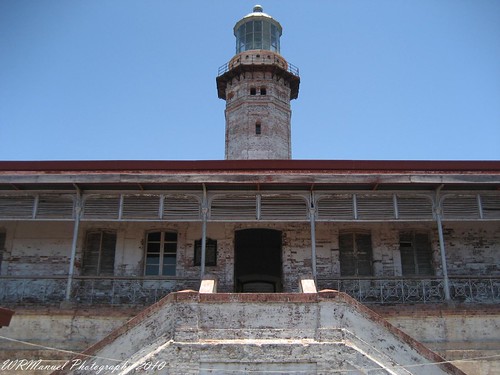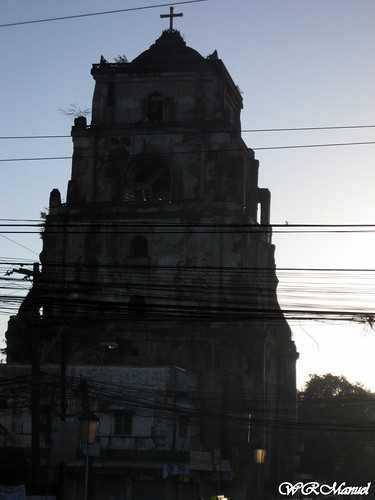YAMBURGER CHRONICLES
I Travel, I Photograph, I Surf
Thursday, July 11, 2013
Pilipinas: St. William's Cathedral, Laoag Belfry & Macy's Diner
Sunday, September 23, 2012
Philippine Sea Sentinels: Faro De Cabo Bojeador
Specifics
Engineer Magin Pers y Pers completed the design on June 1, 1887. Its initial estimate was Php.39,196.89 (Presyong iPhone 5 lang!). It was first lit on March 30, 1892.
The tower is 16.3 meters high. Built of locally made bricks, the octagonal shaped tower has an inner dimension of two meters and an exterior dimension of three and half meters. The top of the tower supports an overhanging balcony, which is surrounded and supported by decorative metal brackets. The attic, where the cupola and lantern rest, is cynical. It is important to note that Faro de Cabo Bojeador still retains its original cupola and lantern.
The dome supports a ball shaped flue, which emits exhausts from the flame of the original gaslight. The lantern is fitted with a first order Fresnel Lens that is partially intact. As a consequence of the great 1990 earthquake of Luzon, parts of the lens collapsed and the alignment of the mechanism was displaced. The Coast Guard retains the original mechanism of the lighthouse. Such mechanism complies with the basic specification for all first order lighthouses.
The pavilion located below contains three apartments, each provided with separate living and sleeping areas, and two offices. One of the offices, the watch room, which is also believed to be the most haunted, is accessed through the gallery; the other through the connecting hallway. The walls of the pavilion are made of bricks while the partitions are a combination of bricks and wood. Interior doors are square headed and crowned by a grilled calado. The doors are made of narra. Unlike other lighthouses designed in the country, the window designed for Faro de Cabo Bojeador did not conform to the usual tripartite division. Only a ventana glazed by glass and protected by wooden jalousies are provided. The pavilion has been transformed as a museum.
Located at the lowest level of the complex is the service building and the courtyard. At the center of the courtyard is the cistern, which is accessible by a small well. Straddling the courtyard to the east and west are the three kitchens and three storage areas. The main gate of the lighthouse is located in the southern and western flank of the courtyard. A flight of stairs in a “T” formation directs the visitors to the pavilion.
How To Get There
If you’re commuting, catch a bus heading to Laoag (Partas, Maria De Leon) or straight to Pagudpud (Florida) where you can request the conductor to drop you over Burgos where the lighthouse is located. If you’re dropping in Laoag, better stay in a hotel there so you can visit all the historic and nice places Southern and Eastern Ilocos Norte has to offer. In downtown Laoag, just hop into a tricycle and ask the driver to bring you to the bus terminal plying to Pagudpud. Back in 2007, the fare for the tricycle ride within the city is Php.7 and the fare to Burgos is Php.60.
Having a road trip up north with your best friends all in one car still tops it all.
The keeper suggested that the lighthouse is open to tourists in the morning and in the afternoon but warned us that he wouldn’t advise anyone to visit beyond 6:00PM because “weird things” happen. These “weird things” were well documented in Halloween specials.
Some serious photographers consider doing night shots of Cape Bojeador Lighthouse. However, I am yet to see a night photograph shot within its compound. All I saw were evening shots, zoomed for a star-studded effect, taken by a person positioned at the start of the road connecting the hill to the highway.
Reference:
Manuel Maximo L. Noche, Lonely Sentinels of the Sea: The Spanish Lighthouses in the Philippines, (UST Publishing House, 2005)
Friday, May 18, 2012
Early Morning Shots of Laoag City's Belfry
Tuesday, March 06, 2012
Philippine Sea Sentinels: Corregidor Lighthouse
I made the visit during my JPIA days sometime in November 2002, when my friends and I were scouting for a venue for the JPIA Regional Convention that year. We were informed by our friends from PUP-Bataan that there was a casino resort in Corregidor Island (our JPIA Bataan Provincial President actually was vouching for the pretty casino girls). From Subic, Zambales, our group travelled at two in the morning to reach the shores of Mariveles, Bataan just before sunrise. From there, we were greeted by a World War II Veteran who happened to own the fishing boat we rented. His domain, as I recall it, was full of World War II memorabilia. Mariveles was a quiet industrial and fishing town then.
One thing I remember about our boat ride then was that our boatman caught a barracuda with his bare hands during the trip. That was all the excitement we had during the 20-minute transfer. Upon arrival at the island, we bargained with the Tranvia operators for a discounted trip around the island. One of the several stops in the tour is a drop over the lighthouse.
I didn’t bring my camera during our trip back in 2002. However, I came back with a camera and with my beautiful Lola last 2007 thanks to Sun Cruises.
The lighthouse stands at what was known then as Top Site, the highest portion of Corregidor Island. The original was built on January 20, 1935. Equipped with 2nd order lens, it primarily served as a guide to vessels entering and leaving Manila Bay.
The Spanish tower was built using rocks originating from Meycauayan, Bulacan. Unlike most Spanish lighthouses in the Philippines, the Corregidor lighthouse is uniquely built by leaning away from the design prevalent in the former. The base of the lighthouse was composed of quarters before. These quarters are now boutique shops catered to tourists visiting the island. The rooms outside were the kitchen and the storeroom then.
Unknown to many, Corregidor Island served as a prison, hence the Spanish word “corregir” or to correct, during the Spanish and American periods. During the Japanese siege, the original lighthouse, like most structures in the island, was not spared from the bombs. It was eventually rebuilt and the tower was redesigned and emblazoned with a crucifix to commemorate those who sacrificed their lives to defend the Philippines. It was recently upgraded and ironically, it was the Japanese government which funded its rehabilitation.
How To Get There
Just like what we did, you can rent a private boat to Corregidor Island from Mariveles, Bataan. There are also boatmen in Ternate, Cavite who can bring you to the rock. Just a warning though, the sea can be very rough during the afternoon.
If you like it hassle-free, there is always Sun Cruises.
Reference:
Manuel Maximo L. Noche, Lonely Sentinels of the Sea: The Spanish Lighthouses in the Philippines, (UST Publishing House, 2005)
Monday, December 05, 2011
Philamlife Christmas Concerts
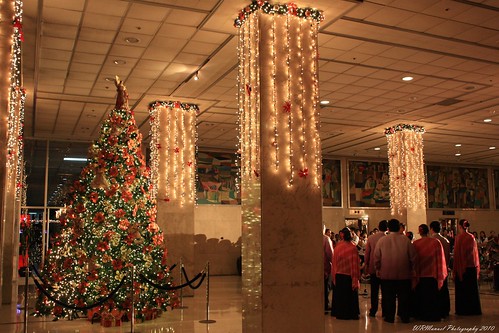
Here is the schedule for this year:
December 5 (Monday) – Philippine Madrigal Singers
December 6 (Tuesday) – UE Chorale
December 7 (Wednesday) – UST Singers
December 8 (Thursday) – University of the Visayas Chorale
December 9 (Friday) – Kilyawan Boys Choir & Voces Aurorae
Admission is free. Programs start at 6:00 PM.
Friday, May 20, 2011
Filtering What's Important
Youngblood : Forgetting
By Raoul Felipe, M.D.
Philippine Daily Inquirer
Posted date: May 03, 2011
“How do you measure a year in the life?... Measure in love.”—“Rent”
Lola had been diagnosed with stage 4 nasopharyngeal cancer (a brutal disease), and doctors had given her only weeks to live. The mass had grown beyond normal proportions (it was the size of a football) and it didn’t take long to know that her prognosis was beyond awful. She was unable to stand anymore, crippled and bedridden by a sickness that not only drains you physically but mentally and emotionally as well. She had become dependent and needy, relying on Lolo for pretty much everything, including going to the bathroom.
Throughout all this, I never heard Lolo complain. Not one bit. And he never left her side. In the months that I had been rotating in Internal Medicine, I never saw a more committed bantay—running around like a headless chicken, trying to cope with whatever orders we gave: “Lolo, paki lakad po itong dugo sa laboratoryo. Lolo, kailangan po natin bumili ng gamot. Lolo, dalhin niyo na po siya sa X-ray.”
It didn’t matter how demanding the task or how intimidating the Philippine General Hospital can get (I actually still get lost here) or how expensive the medicines were, Lolo never failed to deliver. I didn’t know how he managed to make ends meet but every time we needed something, it was Lolo who supplied it.
So there we were in Ward 1, underdressed in our scrub suits, trying to contain our kilig. The other patients paid no attention—they had, after all, their own sicknesses to worry about. And the other doctors didn’t mind us too, being too busy doing what was important for them. The nurses were apathetic as well: a celebration like this didn’t need attending when you are too busy doing your job and what-not. But those of us who came, those of us who thought that we couldn’t let the event go unwitnessed, we all learned a lesson we will never forget.
And so on Sept. 13, 2010 at 10 o’clock in the morning, Lola and Lolo got married after spending nearly 50 years together. They had spent every waking hour together—literally in sickness and in health—and now it was time to end it together, too. It was Lola’s last request, her dying wish.
In a world that values resumés and bank accounts and positions and accomplishments, Lola had nothing to offer. She was beyond poor, had no resumé to brag about, and certainly had no position except what she was by choice: a humble mother and wife who spent her afternoons doing laundry and frying kamote-cue on the street. She had done nothing out of the ordinary, either. She never played in a band or reigned as prom queen or appeared on TV. But when she smiled, she smiled like she meant it. The edge of her eyes were creased with the lines of age and wisdom and her laugh penetrated through you, making you wish that you could smile like she did and laugh like she did—with sincerity and substance. Her bald head, long battered by bouts of chemotherapy, was always covered with a bonnet (the ones you find along Minesview Park, with “Baguio” embroidered along the edge, which never failed to make me smile because like hers some of my best memories were of Baguio).
Lolo was as unassuming and normal as Lola. He was a fisherman. His dark skin had been baked by the sun, his hands callused by hauling nets all day, his thin body no longer framed by taut muscles because they could barely afford one meal a day now. When I looked at Lolo I was always reminded that what I was doing was nothing compared to what he did.
In spite of all they had done—or rather all they had not done—they taught me what I had known all along but chose to disregard: that life is not about remembering or even re-learning what is important, but about forgetting what is not.
I believe that deep in our hearts we already know what is important. We were created with that truth and beauty in us. Yet along the way, distracted by a world that places value on what is seen and measured, we have replaced what is important with what is not.
We need to develop the habit, we need to develop the skill of forgetting. We need to because every waking day is a constant battle between what is valuable and what is not. We already know what matters, but we need to forget what doesn’t.
In the twilight of her life, as the sun set and the end of her journey neared, Lola had already forgotten what was unimportant. After 80 years worth of living and working and smiling and laughing, she knew love is all there is to it. That money lasts weeks, positions last years, careers last decades—but relationships are forever.
(Raoul Felipe, M.D., 25, is a graduating medical student at UP-PGH.)
Thursday, February 03, 2011
Can you Dig’ Bus Disasters?
BATACLAN v. MEDINA
G.R. No. L-10126 October 22, 1957
Montemayor, J.
"In case of death of or injuries to passengers, common carriers are presumed to have been at fault or to have acted negligently, unless they prove that they observed extraordinary diligence."
Facts:
A bus operated by its owner defendant Mariano Medina was on its way to Pasay City. Among the passengers was Juan Bataclan. While the bus was running, one of the front tires burst and the vehicle began to zig-zag until it fell into a canal or ditch on the right side of the road and turned turtle. Bataclan and three others could not get out of the overturned bus.
After half an hour, came about ten men, one of them carrying a lighted torch made of bamboo, evidently fueled with petroleum. These men presumably approach the overturned bus, and almost immediately, a fierce fire started, burning and all but consuming the bus, including the four passengers trapped inside it. The lighted torch brought by one of the men who answered the call for help set it on fire.

"Come to think of it, my tenure is filled with bus disasters eh?..."
By reason of his Bataclan’s death, his widow brought the present suit to recover from Mariano Medina compensatory, moral, and exemplary damages and attorney's fees in the total amount of P87,150. After trial, the Court of First Instance of Cavite awarded P1,000 to the plaintiffs plus P600 as attorney's fee, plus P100, the value of the merchandise being carried by Bataclan to Pasay City for sale and which was lost in the fire. The trial court was of the opinion that the proximate cause of the death of Bataclan was not the overturning of the bus, but rather, the fire that burned the bus; that at the time the fire started, Bataclan was still alive, and so damages are awarded, not for his death, but for the physical injuries suffered by him.
The plaintiffs and the defendants appealed the decision to the Court of Appeals. The latter endorsed the appeal to the SC because of the value involved in the claim.
Issue:
Whether or not defendant is liable for the death of the victim
Held:
Yes. Pursuant to the provisions of the civil code, in case of death of or injuries to passengers, common carriers are presumed to have been at fault or to have acted negligently, unless they prove that they observed extraordinary diligence.
The SC disagrees with the trial court’s ruling. Proximate cause is defined that cause, which, in natural and continuous sequence, unbroken by any efficient intervening cause, produces the injury, and without which the result would not have occurred.
In the present, the proximate cause was the overturning of the bus, this for the reason that when the vehicle turned not only on its side but completely on its back, the leaking of the gasoline from the tank was not unnatural or unexpected and that because it was dark, the rescuers had to carry a light with them. In other words, the coming of the men with a torch was to be expected and was a natural sequence of the overturning of the bus, the trapping of some of its passengers and the call for outside help.
Moreover, the burning of the bus can also in part be attributed to the negligence of the carrier, through is driver and its conductor. According to the witness, the driver and the conductor were on the road walking back and forth. They, or at least, the driver should and must have known that in the position in which the overturned bus was, gasoline could and must have leaked from the gasoline tank and soaked the area in and around the bus, this aside from the fact that gasoline when spilled can be smelt and directed even from a distance, and yet neither the driver nor the conductor would appear to have cautioned or taken steps to warn the rescuers not to bring the lighted torch too near the bus.
